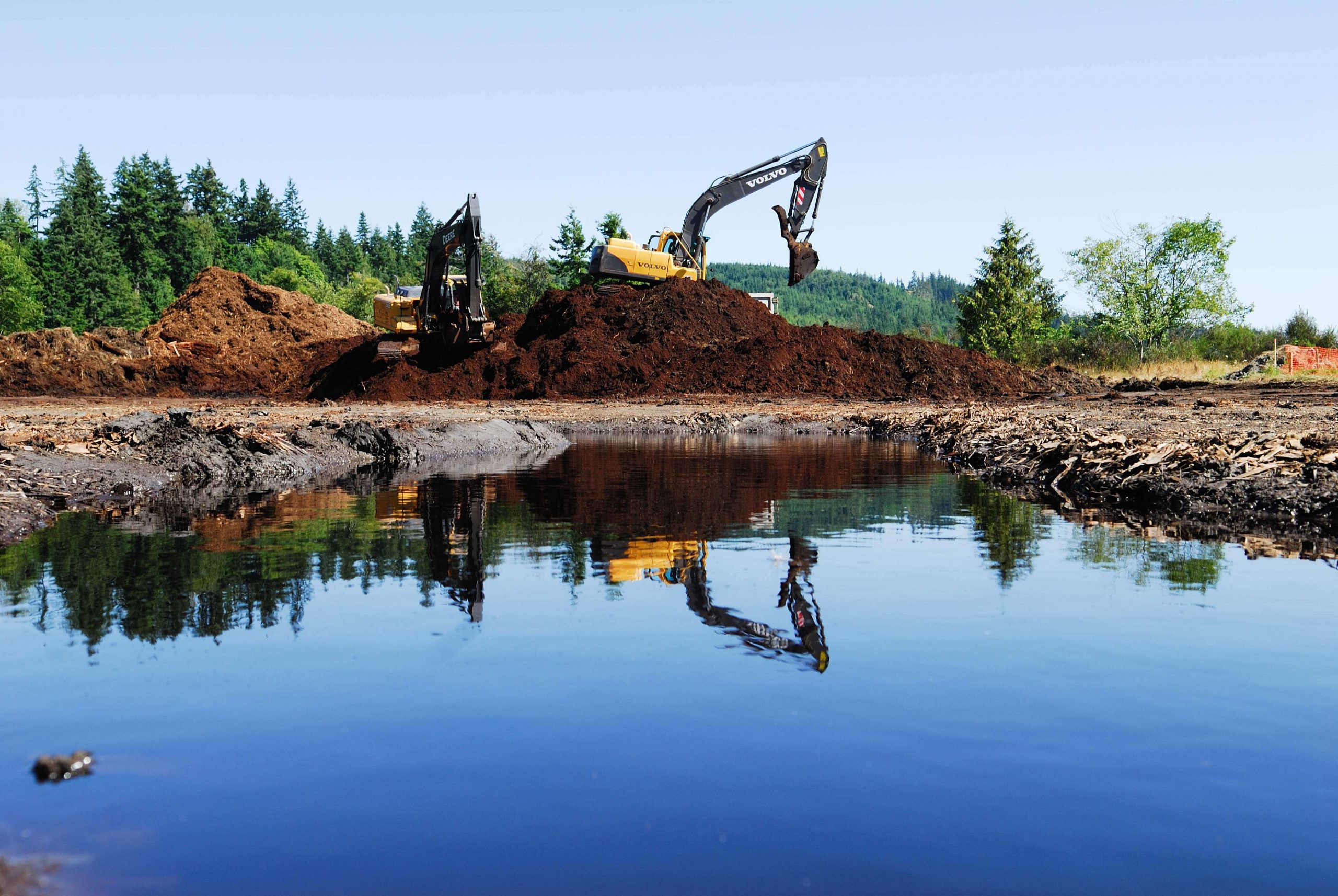Restoring an old mill site to benefit salmon, shellfish, and people
The Salmon Creek and Snow Creek estuaries are located within a half-mile from each other in Discovery Bay, forming a complex system of salt and freshwater interchange where young salmon get used to saltwater before they head out to sea. The area is critical to the life histories of ESA listed summer chum salmon, steelhead trout, and Chinook salmon as well as cutthroat trout and state listed coho salmon. The North Olympic Salmon Coalition led the restoration of the Salmon Creek Estuary as part of a larger effort to reverse habitat damage caused by an old mill site, where wood waste was burying fish habitat, and to restore habitat for multiple species of salmon throughout the Discovery Bay watershed. By removing old wood waste and sawdust that had buried the site for decades, 11 acres of salt marsh was restored to benefit juvenile salmon and many other species dependent on estuary habitat. Multiple tidal channels were excavated out after the waste was removed to jumpstart the natural processes of tidal channel formation in this restored area. Native wetland vegetation was planted over 4 acres of the site.
What worked:
- Removing 4,700 cubic yards of built up sawdust and 25,000 cubic yards of wood waste and gravel on site revealed historic tidal channels.
- Restoration of 11 acres of salt-marsh habitat opened 1,100 meters of tidal channels for salmon foraging, rearing, cover and migration.
- Juvenile ESA-listed Hood Canal Summer Chum, staghorn sculpin and forage fish are documented using the tidal channels during out-migration.
- Native plants installed at the project have spread to 100 per cent plant cover by 2019 in the south project area, increasing shade to cool water and providing insect food for salmon.
- Reusing 2,875 cubic yards of removed material as backfill saved money on construction costs.
Benefits:
- An additional 4,200 meters of tidal channel are anticipated to develop naturally over time.
- Water quality is improved for fish, wildlife, and people by removing toxics-leaching wood.
- Multiple salmon species will benefit from restored tidal channels and improved connectivity between fresh and saltwater habitats.
- Restoring the nearshore habitat complements restoration of the Maynard Nearshore.
Location:
- Congressional District: 6
- Legislative District: 24
- WRIA: 17
- County: Jefferson
Partnerships:
- North Olympic Salmon Coalition
- Washington Department of Fish and Wildlife
- Private landowners
- Jefferson Land Trust
- Jefferson Conservation District
- Jamestown S’Klallam Tribe
Project Funding:
- Puget Sound Acquisition and Restoration
- Salmon Recovery Funding Board
- NOAA
- Estuary and Salmon Restoration Program
- Fish America Foundation
- Department of Ecology Coastal Protection Fund

